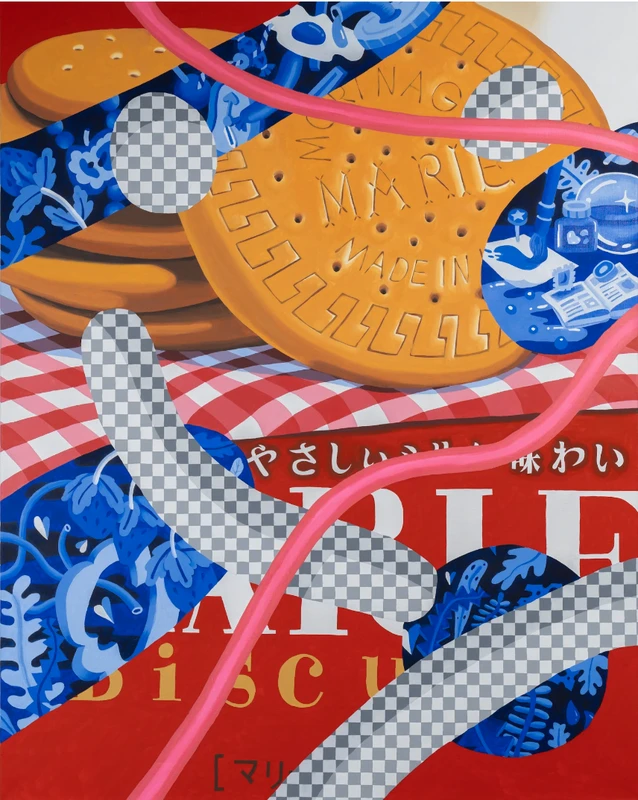Ziping Wang: Small Talk
6 Feb-10 Mar 2024


Ziping Wang’s latest exhibition with Unit London demonstrates a significant shift towards abstraction. Wang continues to explore everyday themes, reflecting the exhibition’s title, Small Talk, which considers day-to-day social situations. While the artist’s most persistent motif of commercial product packaging still remains, these visual elements begin to take a less dominant role in Wang’s compositions, becoming increasingly obscured and distorted. Similar to abstract expressionist “all-over painting”, each element of these artworks has equal importance; the eye is drawn to all areas of the canvas rather than being distracted by a recognisable motif. In an intuitive development of Wang’s visual practice, Small Talk becomes an experiment in the process of painting.
Comprising layers of fragmented depictions, Wang’s vibrantly saturated artworks aim to visualise the contemporary phenomenon of information overload. Patterns collide and intersect to reflect the abundance of imagery in everyday life. At the same time, areas of grey chequerboard grids represent neutral zones that ground and offset the vibrancy of each composition. The artist remains most drawn to the everyday visuals that many of us would not think to examine closely. She is persistently attracted to the dynamic colours and designs of food packaging. In previous exhibitions, these images of colourful packaging had strong connections to the artist’s childhood memories.
In Small Talk, however, images of product packaging act merely as material, representing visual patterns rather than any sense of nostalgia. They exist in a more elemental form, contributing to what Wang defines as the “curated surface” of her artworks. Unlike previous exhibitions, images of packaging are abstracted; particular brand names are concealed as each image becomes increasingly crowded until we are unable to discern any recognisable elements. Unsure of what is real and what is not, the viewer is further discombobulated in a visual process that emulates the overstimulation of contemporary life. Wang takes these ideas further in several smaller paintings created for Small Talk. In a series of monochrome artworks, the artist removes all figurative elements, leaving behind surreal compositions that are not beholden to external referents. Almost cubist in nature, these artworks are the product of Wang’s newly experimental approach.
Small Talk therefore presents a series of artworks that explore the process of painting itself. In a continuous play between the real and the surreal, Wang pushes her visual language up to the edge of abstraction. Combining a new intuitive approach with a seasoned meticulous process, Wang gradually tests new ideas to see where they might lead. The artist attempts to achieve balance by leaving the confines of representation behind. As a result, Small Talk marks a new beginning for Wang as she attempts to distil the core elements of the painting process.